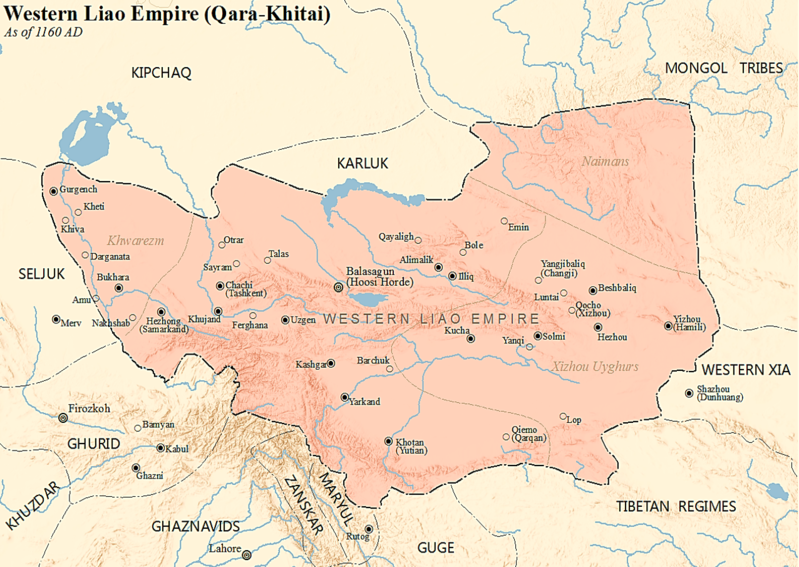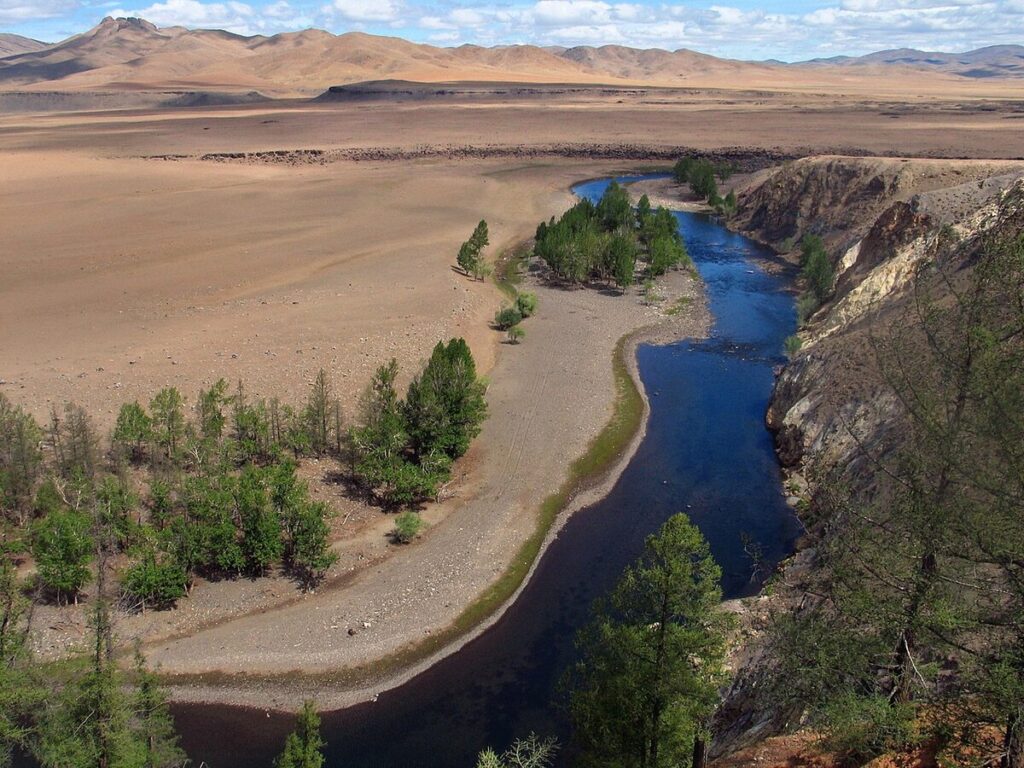The nomadic states of Central Asia regularly replaced each other, but never violating the most important principle of the nomadic world — the priority of nomadic life over sedentary habitation. Only a few nomadic ethnic groups were able to create a symbiosis between the nomadic and settled world. And first of all, this is the Uyghur khaganate. The Uyghur Khaganate is an ancient Turkic state created in 744 and existed for about a hundred years. It fell in 840 under the blows of the eternal enemies — the Yenisei Kirghiz.

The Uyghur Khaganate in 751
The Uyghur Khaganate was located on the territory of the former Second Eastern Turkic Khaganate — in the east it was the lands of Manchuria, in the north the borders of the khaganate reached Lake Baikal, in the west they included East Turkestan, in the south of the khaganate the Gobi desert stretched.
The capital of the khaganate was Ordubalyk (Karabalgasun), located on the left bank of the Orkhon River (17 km from the Mongolian city of Karakorum).

Orkhon (mong. Orkhon Gol is a river in Mongolia, a right tributary of the Selenga River.
It was a territory that in ancient Turkic sources was designated as Oteken. Today it is the Khangai Mountains. Oteken was the sacred center of the ancient Turks. And the khagans of the Eastern Turkic khaganate placed their headquarters precisely in the sacred mountains of Oteken.
The main opponents of the Uyghurs at that time were the Tang Empire and Tibet.
The history of the Uyghur Khaganate has been studied well enough on the basis of written sources (actually Uyghur and Chinese).
Stone-carved monuments with runic signs, which were created by the Uyghurs, were found in the interfluve of Orkhon and Selenga. One of these monuments is the Karabalgasun inscription, discovered on the territory of the capital Ordubalyk.
The founder of the Uyghur Khaganate is Kutlug I Bilge Palo. He ruled for three years and Moyan-chur ascended the throne, who was able to create a strong centralized state.

Moyan-chur was the khagan of the Uyghur khaganate from 747 to 759.
Moyan-chur pursued an active policy of conquest, which made it possible to subordinate all large nomadic tribes to a single authority (elu).
However, the power of the Uyghurs was not solid!
Already in the early years of the khaganate, related Turkic tribes began uprisings against the Uyghur government.
But the Uyghurs got over it. And first of all, not by using military force. They created a standard of living in the steppe that made it comfortable for nomads, starting the process of urbanization of the Great Steppe.
So, there were many other cities on the territory of the Uyghur khaganate, in addition to the capital Ordubalyk. This is confirmed by sources who speak about the initiative of the Uyghur kagans. In the chronicles of Moyan-chur, it is said that the kagan, for example, ordered, for example, Sogdian and Chinese craftsmen to build the city of Baibalyk on the banks of the Selenga River.
The beginning of Uyghur statehood was facilitated by the weakness of China. In 755, an uprising broke out in the Tang Empire by a border commander of Turkic origin, An Lushan.

An Lushan (ca. 703 — January 29, 757) was a Chinese military commander (Jiedushi) of Sogdian origin, who in 755 led a large—scale uprising to overthrow the reigning Tang Dynasty and captured the imperial capital, Chang’an.
The Uyghurs assisted the Tang emperors in suppressing the rebellion of Al Lushan.
It was thanks to the Uyghurs that the Tang dynasty managed to suppress the uprising. In 762, the last campaign of Begyu Kagan to China took place. He was the son of Moyan-chur. Begyu Kagan went to Northern China with a huge army. And thanks to the Uyghurs, the uprising was finally finally suppressed. As a result, the Tang Empire regained its power throughout China.
In exchange for their services, the Chinese paid with silk, which they gave for Uyghur horses. Moreover, the horses were starved, but the silk was of very good quality. The kagans and their entourage, and with them the Sogdian merchants who resold this silk, became rich as modern multi-billionaires.
It was only with the coming to power of the new emperor Tang Dezong that the non-mutually beneficial exchange was stopped. China refused military aid to the Uyghurs and stopped buying their horses for silk.

Dezong (May 27, 742 — February 25, 805) was the 12th emperor of the Tang Dynasty in 779-805.
But after Dezong’s death, subsequent Tang emperors returned to the practice of allied relations with the Uyghurs. And along with silk, they even began to pass off their own daughters as kagans for horses.
